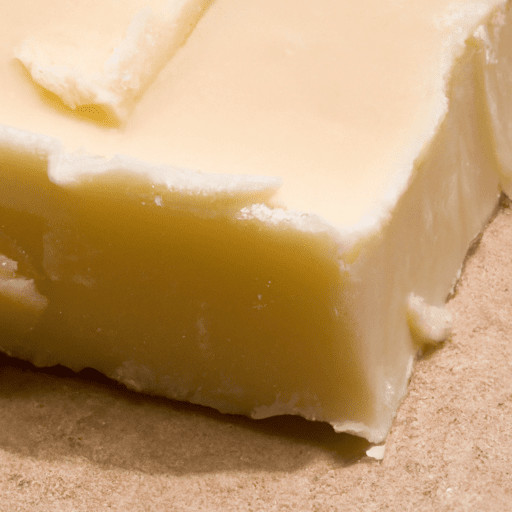The Sweet Delight of Butterscotch: A Perfect Addition to Every Dessert
Butterscotch, with its rich and creamy taste, has been captivating dessert lovers for centuries. This delectable confection is known for its distinct sweet and buttery flavor that is hard to resist. In this blog post, we will dive into the tantalizing world of butterscotch, exploring its taste, common uses in cooking, nutritional value, and uncovering some interesting history and facts. Prepare to indulge your senses as we peel back the layers of this delicious treat.
Taste: A Symphony of Sweetness and Warmth
Butterscotch has a truly unique flavor profile that combines sweetness, subtle hints of toffee and caramel, and a comforting undertone of butteriness. The combination of brown sugar, butter, and creamy undertones gives it an irresistibly smooth texture that melts in your mouth, leaving behind a pleasant warmth that lingers.
Common Uses: Versatile and Delicious
Butterscotch’s versatility makes it a beloved ingredient in various culinary creations. From decadent desserts to creative beverages, its rich flavor can enhance a wide array of dishes. Here are some common uses of butterscotch in cooking:
1. Desserts:
- Butterscotch Pudding: A classic treat, creamy and smooth, with a delightful sweetness.
- Butterscotch Sauce: Drizzle it over ice cream or cake for a heavenly combination of flavors.
- Butterscotch Brownies: These heavenly squares combine the indulgence of chocolate with the richness of butterscotch.
2. Beverages:
- Butterscotch Latte: Enjoy a comforting and velvety latte infused with the essence of butterscotch.
- Butterscotch Milkshake: Blend creamy vanilla ice cream with butterscotch sauce for a dreamy dessert drink.
3. Baked Goods:
- Butterscotch Cookies: Add a chewy texture and extra sweetness to your favorite cookie recipes.
- Butterscotch Cheesecake: Elevate your classic cheesecake with a swirl of luscious butterscotch.
Nutritional Value: A Treat in Moderation
While butterscotch is undoubtedly delicious, it is essential to indulge with moderation due to its high sugar and calorie content. Nonetheless, there are some nutritional benefits worth noting:
- Vitamins and Minerals: Butterscotch incorporates small amounts of essential vitamins and minerals, including calcium and iron.
- Comfort and Happiness: The indulgence of butterscotch can contribute to a sense of pleasure and contentment, as desserts often do.
Remember, moderation and balance are key to enjoying the delights of butterscotch without compromising your health goals.
A Brief History of Butterscotch
The precise origins of butterscotch remain somewhat of a confectionery mystery. However, there are a few remarkable tales surrounding its creation. In one account, it is said that butterscotch originated in early 19th century England when a confectioner accidentally added boiling butter to a batch of candy instead of boiling sugar. The resulting mixture, with its deliciously rich flavor, quickly became a sensation.
On the other hand, some believe that butterscotch derives its name from the “scotched” candy-making technique. This process involves boiling butter and brown sugar together until it reaches a specific temperature, creating the distinctive butterscotch flavor.
Regardless of its exact origin, butterscotch has found its way into the hearts and palates of people worldwide, becoming a timeless culinary treasure.
Fun Facts About Butterscotch
To further pique your interest in butterscotch, here are some delightful facts:
- The term “butterscotch” is rumored to have been derived from “scorching” the butter during the cooking process.
- One popular theory suggests that the first use of the word “butterscotch” can be traced back to Doncaster, England, in the early 19th century.
- Butterscotch-flavored candies became particularly popular during World War I when demand for sweets soared, as they provided a desirable and affordable treat.
Let Your Taste Buds Dance with Butterscotch
Butterscotch, with its warm, buttery taste and delightful sweetness, is a true culinary treasure. From its versatile use in desserts and beverages to its tantalizing history, there is much to explore and enjoy. So, next time you’re seeking a touch of indulgence, consider incorporating butterscotch into your kitchen creations. Let its creamy texture and heavenly flavor transform every bite into a moment of pure bliss.
Butterscotch
Origin: Butterscotch is believed to have originated in Scotland in the early 19th century. Unlike caramel, which is made by heating sugar, butterscotch is made by combining brown sugar, butter, and often cream.
Common uses: Butterscotch is commonly used as a flavoring in confectionery, desserts, and beverages. It is often found in candies, ice cream, cakes, cookies, puddings, and sauces like butterscotch caramel.
Nutritional benefits: Butterscotch is rich in calories due to its sugar and butter content. It also contains a moderate amount of fat and carbohydrates. It does not provide significant nutritional benefits in terms of vitamins, minerals, or fiber.
Unique properties: Butterscotch has a distinct sweet, buttery, and slightly caramelized flavor. It is often described as having a rich and creamy texture. The unique combination of brown sugar and butter gives it a distinct and indulgent taste.
Historical significance: Butterscotch has been enjoyed as a treat for many years. It gained popularity in the Victorian era and became a well-loved flavor in the 19th and 20th centuries. Today, it remains a classic flavor that is enjoyed by many.




Use the share button below if you liked it.
It makes me smile, when I see it.